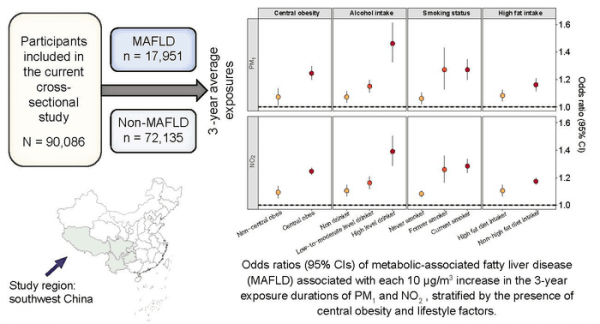Metabolic-associated fatty liver disease (MAFLD) is a growing global health challenge and poses a substantial economic burden. A large-scale epidemiologic study in China has identified links between long-term exposure to ambient air pollution and MAFLD. These links are exacerbated by unhealthy lifestyles and the presence of central obesity, report scientists in the Journal of Hepatology, the official journal of the European Association for the Study of the Liver, published by Elsevier.
The incidence of MAFLD has increased steadily since the 1980s, currently affecting a quarter of the global population and a majority of patients with adult-onset diabetes and poses a substantial global burden. In Asia, MAFLD increased to 40% between 2012 and 2017. Formerly known as nonalcoholic fatty liver disease (NAFLD), it may progress to end-stage liver diseases such as cirrhosis and liver cancer, liver transplantation and liver-related death.
Accumulating animal studies have shown that breathing air pollutants may increase the risk of MAFLD. For instance, fine particulate matter exposure may trigger a nonalcoholic steatohepatitis (NASH)-like phenotype, impair hepatic glucose metabolism, and promote hepatic fibrogenesis.
Read more at Elsevier
Image: A large-scale epidemiologic study in China has identified links between long-term exposure to ambient air pollution and metabolic-associated fatty liver disease (MAFLD). (Credit: Journal of Hepatology)


